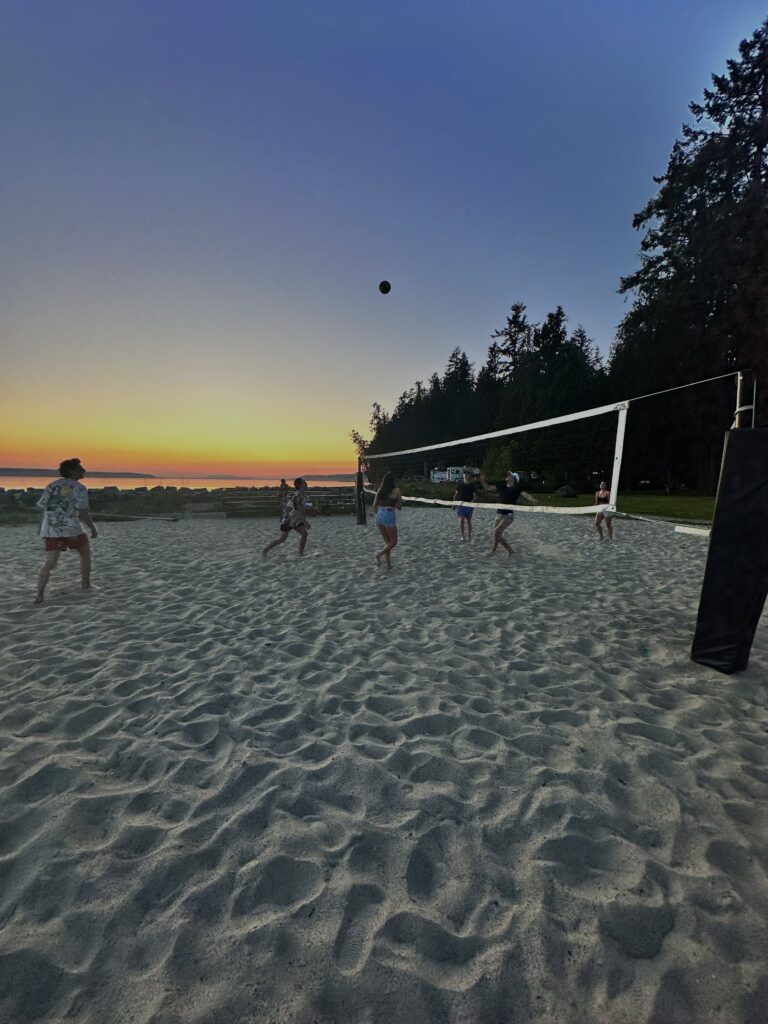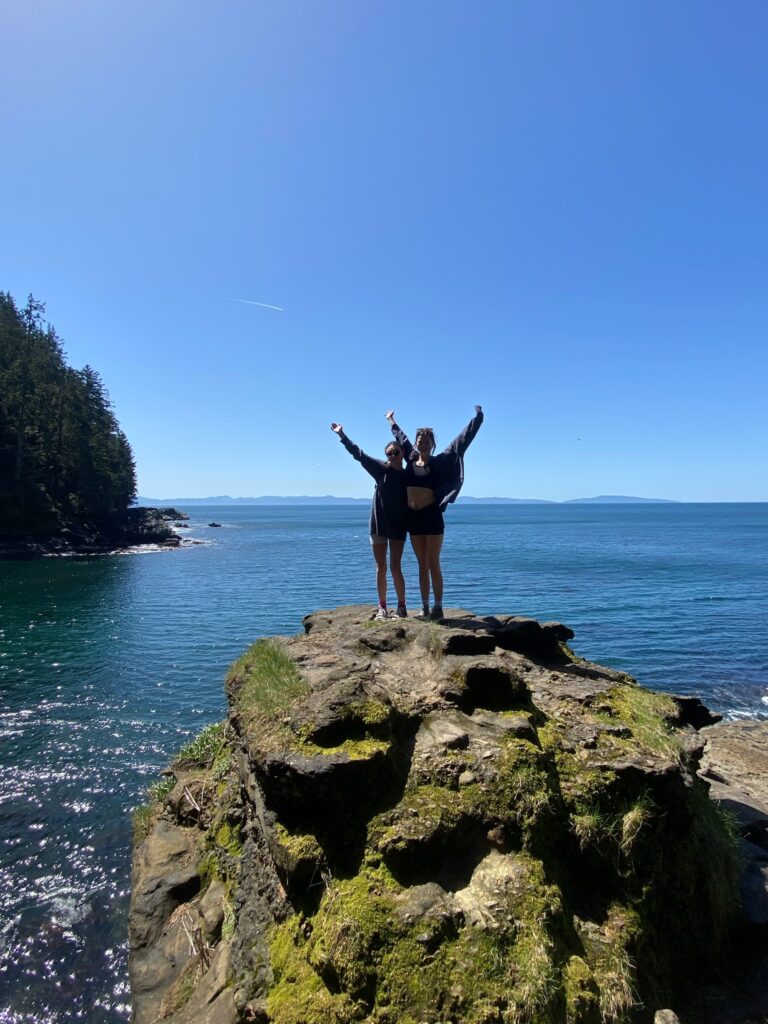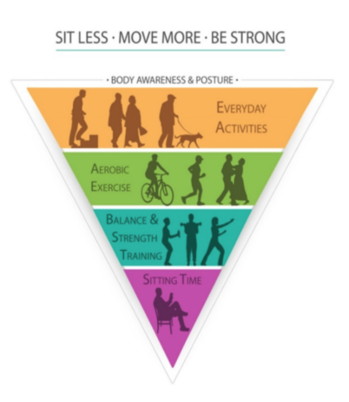
A bit About the Author
Hi everyone my name is Hannah I am a third-year student studying psychology. I began my university career in 2021 which should make me a fourth-year student, however, I took some time away from school to go backpacking for four months around Australia and South-East Asia last year. I am very excited about this class because I haven’t had the opportunity to study some of these topics in Psychology. My goal is to be an occupational therapist working with children and I believe I will learn some great life skills from this class that can be applied to all domains of well-being.

The Five-Step Model for Active Health: A Guide for Leaders
Promoting active health and well-being among youth is a vital aspect of leadership in health education. The Five-Step Model for Active Health provides a structured framework that can guide educators and community leaders in fostering sustainable physical activity and well-being. This blog explores how this model can be applied in leadership roles to address the growing concern of sedentary behaviour among youth while empowering a way to adopt healthier lifestyle choices.

Applying the Five-Step Model For Active Health
The 5-step model for active health is an invaluable tool designed to help leaders in health education. Its Five components- Agree, Built, Clarify, Define and Evaluate- can guide efforts of promoting active living in youth.
Where To Start
To begin, it is important to address the current situation. The first step in The Five-Step Model is to evaluate the current status of active living within your school or community.
Step 1- Agree: Assessing Current Engagement
Current Situation: Begin by understanding how much time students or community members are spending on physical activity versus sedentary activities. It is important to have a baseline so we can guide progress. Surveys and health screenings can provide a clear picture of current engagement levels. It is also worth knowing how much physical activity is recommended per day for youth, according to the World Health Organization children and adolescents aged 5-17 should have 60 minutes of moderate-vigorous physical activity.
Your role: As a leader, it is part of your role to assess your contribution to health initiatives. Part of a leader’s role in active health is to promote physical activity through programs and personal involvement. This can take form in many ways such as supporting or creating active clubs, movement activities in classrooms, leisurely activities for the community or being an outlet for more options. There is always a way to participate in active health some individuals just need the information.
Coworker Awareness: Consider whether your colleagues are aware of and engaged in active living concepts. Collaboration is crucial to driving change.
Program Offerings: Review existing programs in your school or community and see if they meet the needs of the youth. Are there gaps for accessibility and inclusivity, active health should involve everyone! As the needs of youth are changing so should active health offerings.
This step establishes a baseline and highlights areas for improvement, setting the stage for meaningful interventions.
Step 2- Build: Laying the foundation
Building a strong foundation involves rallying key stakeholders and creating a shared vision for active living.

Share the vision: Clearly articulate your vision for an active living environment. As a leader, you should be prepared to share with others your ideas for active living. For example, imagine a school where students have daily opportunities to move, play and thrive. Research has shown that health and education play an important mutually beneficial role in youth, students do better in the classroom when they are participating in an active healthy lifestyle.
Identify key people: Engage teachers, parents, administrators and student leaders who can be a apart of active living initiatives.
This stage is about inspiring and gaining support to create a culture of active living.
Step 3- Clarify: Establishing a Common Understanding
Clarifying the concept of active living ensures that everyone is aligned and working towards the same goals.
Understanding The Concept: Engage your community in discussions about what active living means. How do different individuals perceive its importance? Once everyone has a clear understanding of the goals, we can work together as a community.
Communication Methods: As a leader the weight of communication mainly falls on your shoulders, using things like newsletters and staff meetings as well as informal conversations to spread awareness and discuss ideas is crucial.
Vision statement: Develop a concise and inspiring vision statement, something that is easy to understand and gets the message across to all stakeholders.
Active Mind, Active Bodies
Informing partners: Share your vision with everyone, including students, parents, and community members to build a unified commitment to active living.
Establishing this common understanding creates a solid framework for action!
Step 4- Define: Setting Objectives and Plans
This step focuses on creating action with our goals and a clear roadmap for achieving them.
Goals: Identifying specific and measurable achievements is necessary for success.
Organizational Structure: Define roles and responsibilities for team members, who will be overseeing events, tracking the progress and communicating new ideas or updates. It is important to have a structure in movements so everyone knows their responsibility.

Action Plans: These are the detailed strategies you will be using such as introducing lunchtime walking clubs or afterschool programs. The specifics of ways to implement active living.
Setting priorities: Ranking goals is a great way to focus on initiatives, we wanna do what will generate the greatest change in the shortest time, so we can rank our goals based on their impact.
With objectives and plans in place, your team will have a clear path for moving forward.
Step 5- Evaluate: Reviewing and Learning
Regular evaluation ensures that initiatives remain effective and can be refined over time.
Objective Achievement: Assess whether goals have been met, for example, this could mean taking attendance at physical activity events and monitoring changes in student fitness levels.
Assessment methods: There are many assessment methods that would be useful, surveys, observations and feedback from students and staff are great methods to start with.
Impact analysis: Analyze how these steps have affected the school. Has there been a positive change in youths’ active health?
Lessons learned: Reflect on what worked well and what could be improved. Did students learn valuable skills or develop a greater appreciation for active living?
Future objectives: Use insights from evaluations to refine goals and strategies for the next phase.
This step ensures continuous improvement for long-term success.
Why is This All important?
Active living is important because it empowers educators and leaders to create sustainable, health-focused environments that prioritize physical activity and overall well-being for youth. By using a structured framework like the Five-Step Model for Active Health, leaders can systematically identify areas of improvement, rally support, and implement actionable plans.
Addressing sedentary behaviour and promoting active living is essential for combating the rising health challenges associated with inactivity.
Addressing Sedentary Behaviour in Youth
One critical challenge in promoting active living is combating sedentary behaviour. Excessive screen time and prolonged sitting are detrimental to the physical and mental health of youth.
Sedentary behaviour in youths has negative effects on physical health. Sedentary habits contribute to obesity, weak muscles and increased risk of chronic conditions. A lack of movement can lead to anxiety, depression and lower self-esteem.
Ways to Reduce Sedentary Behaviour in Youths
- Increase classroom physical activity
- Opportunity for physical activity during classtime
- Incorporate movement into routines
- Promote active transportation
- Design engaging activities
- Limit screen time
- Create a supportive environment
- Create inclusive activities for everyone
Through collaboration, creativity, and commitment, we can empower youth to prioritize their health and well-being. Together, let’s take the steps needed to build a brighter, healthier future.
Sources
World Health Organization. (2020). Physical activity guidelines for children and adolescents. Retrieved from https://iris.who.int/bitstream/handle/10665/337001/9789240014886-eng.pdf
Public Health Agency of Canada. (2023). Promoting healthy active living in schools. Retrieved from https://www.canada.ca/en/public-health/services/child-infant-health/school-health.html
Centers for Disease Control and Prevention. (2021). Strategies for reducing sedentary behavior in schools. Retrieved from https://www.cdc.gov/physical-activity-education/media/pdfs/2019_04_25_Strategies-for-CPA_508tagged.pdf
International Journal of Behavioural Nutrition and Physical Activity. (2011) A Systematic review of sedentary behaviour and health indicators in school-aged children and youth https://link.springer.com/article/10.1186/1479-5868-8-98
Leave a Reply